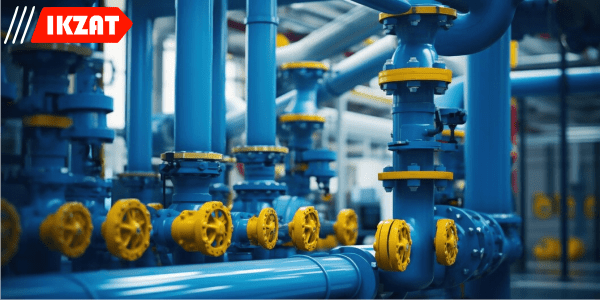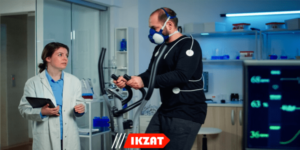In the dynamic landscape of business plumbing, innovation serves as the cornerstone of progress. Companies are continuously exploring new technologies and strategies to enhance efficiency, sustainability, and overall performance. This article delves into the pivotal innovations driving growth in the business plumbing sector, exploring their impact and potential for the future.
Advanced Filtration and Water Purification Technologies
One of the emerging trends in the business plumbing sector is the integration of advanced filtration and water purification technologies. With growing concerns about water quality and safety, businesses are investing in innovative solutions to ensure the purity of their water supply. Filtration systems equipped with state-of-the-art membranes and purification techniques such as reverse osmosis are becoming increasingly prevalent in commercial settings. These technologies not only remove impurities and contaminants but also enhance the taste and odor of the water, meeting stringent quality standards and providing peace of mind to consumers.
Predictive Maintenance Strategies
Predictive maintenance strategies are revolutionizing the way businesses manage their plumbing infrastructure. By leveraging data analytics, sensor technology, and machine learning algorithms, companies can predict potential equipment failures and issues before they occur, allowing for proactive maintenance interventions. This approach minimizes downtime, reduces repair costs, and prolongs the lifespan of plumbing systems, ultimately enhancing operational efficiency and reliability. Predictive maintenance also enables businesses to schedule maintenance tasks more efficiently, optimizing resource allocation and maximizing productivity.
Remote Monitoring and Control Systems
Remote monitoring and control systems are empowering businesses to manage their plumbing infrastructure effectively from anywhere in the world. These cloud-based platforms provide real-time insights into system performance, allowing operators to remotely monitor parameters such as water pressure, temperature, and flow rates. In the event of anomalies or issues, alerts can be sent to designated personnel, enabling prompt response and resolution. Remote monitoring and control systems enhance operational efficiency, reduce the need for onsite presence, and facilitate proactive maintenance, ultimately driving cost savings and optimizing resource utilization.
Enhanced User Experience and Accessibility
As technology continues to evolve, there is a growing emphasis on enhancing the user experience and accessibility of plumbing systems in commercial settings. User-friendly interfaces, intuitive controls, and mobile applications are becoming standard features of modern plumbing fixtures and equipment. These innovations not only streamline operation and maintenance tasks but also empower users to monitor and control their water usage more effectively. By prioritizing user experience and accessibility, businesses can improve customer satisfaction, differentiate their offerings, and stay ahead of the competition in an increasingly digital world.
Integration with Building Automation Systems (BAS)
Integration with Building Automation Systems (BAS) is another key trend shaping the future of business plumbing. BAS coordinate the operation of various building systems, including HVAC, lighting, and security, to optimize energy efficiency and occupant comfort. By integrating plumbing systems with BAS, businesses can achieve greater synergy and coordination between different components of the building infrastructure. This integration enables centralized control, seamless communication, and holistic optimization, leading to improved overall performance and sustainability.
Optimizing Water Distribution Networks
Efficient water distribution is essential for ensuring reliable and sustainable plumbing infrastructure in commercial buildings. Innovations in water distribution networks, such as advanced piping layouts, hydraulic modeling, and pressure management strategies, are helping businesses optimize their water distribution systems. By minimizing leaks, reducing pressure fluctuations, and balancing water demand, these advancements enhance system efficiency, conserve resources, and mitigate the risk of waterborne diseases. Optimized water distribution networks contribute to cost savings, environmental sustainability, and enhanced reliability of plumbing infrastructure.
The Rise of Smart Plumbing Solutions
In recent years, the adoption of smart plumbing solutions has surged, revolutionizing traditional approaches to commercial plumbing systems. These cutting-edge technologies integrate sensors, automation, and data analytics to optimize water usage, detect leaks, and enhance overall system management. Smart plumbing solutions offer real-time monitoring, enabling businesses to identify and address issues promptly, thereby minimizing downtime and reducing water wastage.
Sustainable Practices and Eco-Friendly Initiatives
Amid growing environmental concerns, businesses are increasingly prioritizing sustainability in their plumbing practices. From water-efficient fixtures to greywater recycling systems, eco-friendly initiatives are reshaping the landscape of business plumbing. Companies are embracing sustainable practices not only to reduce their environmental footprint but also to achieve cost savings and enhance brand reputation.
Advancements in Pipe Materials and Design
Innovations in pipe materials and design have ushered in a new era of durability, efficiency, and versatility. Advanced materials such as PEX (cross-linked polyethylene) and HDPE (high-density polyethylene) offer superior strength, corrosion resistance, and flexibility compared to traditional options like copper and galvanized steel. Additionally, innovative pipe designs optimize flow dynamics, minimizing pressure losses and improving system performance.
Integrated Building Management Systems (IBMS)
Integrated Building Management Systems (IBMS) are revolutionizing the way businesses manage their plumbing infrastructure. These comprehensive platforms centralize control and monitoring functions, allowing seamless integration with other building systems such as HVAC and lighting. IBMS leverage automation and data analytics to optimize energy usage, streamline maintenance, and enhance overall operational efficiency.
Flowing Forward: Innovations Driving Growth in Business Plumbing
The future of business plumbing is characterized by continuous innovation and evolution. As companies strive to stay ahead in a competitive landscape, embracing technological advancements and sustainable practices will be paramount. By leveraging smart solutions, prioritizing sustainability, and embracing integrated management systems, businesses can unlock new levels of efficiency, productivity, and success in the realm of plumbing infrastructure.
FAQs
- What are the key benefits of smart plumbing solutions? Smart plumbing solutions offer real-time monitoring, prompt issue detection, and enhanced water efficiency, leading to reduced downtime and cost savings.
- How do sustainable plumbing practices contribute to business growth? Sustainable plumbing practices not only reduce environmental impact but also lead to cost savings, improved brand reputation, and regulatory compliance.
- Which pipe materials are considered most advanced in modern plumbing systems? Advanced materials such as PEX and HDPE offer superior durability, corrosion resistance, and flexibility compared to traditional options like copper and galvanized steel.
- What role do Integrated Building Management Systems (IBMS) play in business plumbing? IBMS centralize control and monitoring functions, optimizing energy usage, streamlining maintenance, and enhancing overall operational efficiency by integrating plumbing systems with other building infrastructure.
- How do eco-friendly initiatives benefit businesses beyond environmental sustainability? Eco-friendly initiatives not only contribute to environmental sustainability but also result in cost savings, improved brand reputation, and compliance with regulations and standards.
- What are some emerging trends in the field of business plumbing? Emerging trends include the integration of Internet of Things (IoT) devices, advancements in water filtration and purification technologies, and the adoption of predictive maintenance strategies.
Conclusion
In conclusion, the landscape of business plumbing is evolving rapidly, driven by a confluence of technological advancements, sustainability initiatives, and shifting consumer expectations. By embracing innovations such as smart plumbing solutions, sustainable practices, and predictive maintenance strategies, businesses can unlock new levels of efficiency, reliability, and sustainability in their plumbing infrastructure. As the industry continues to evolve, staying abreast of emerging trends and leveraging cutting-edge technologies will be crucial for businesses seeking to thrive in a competitive and rapidly changing environment.













